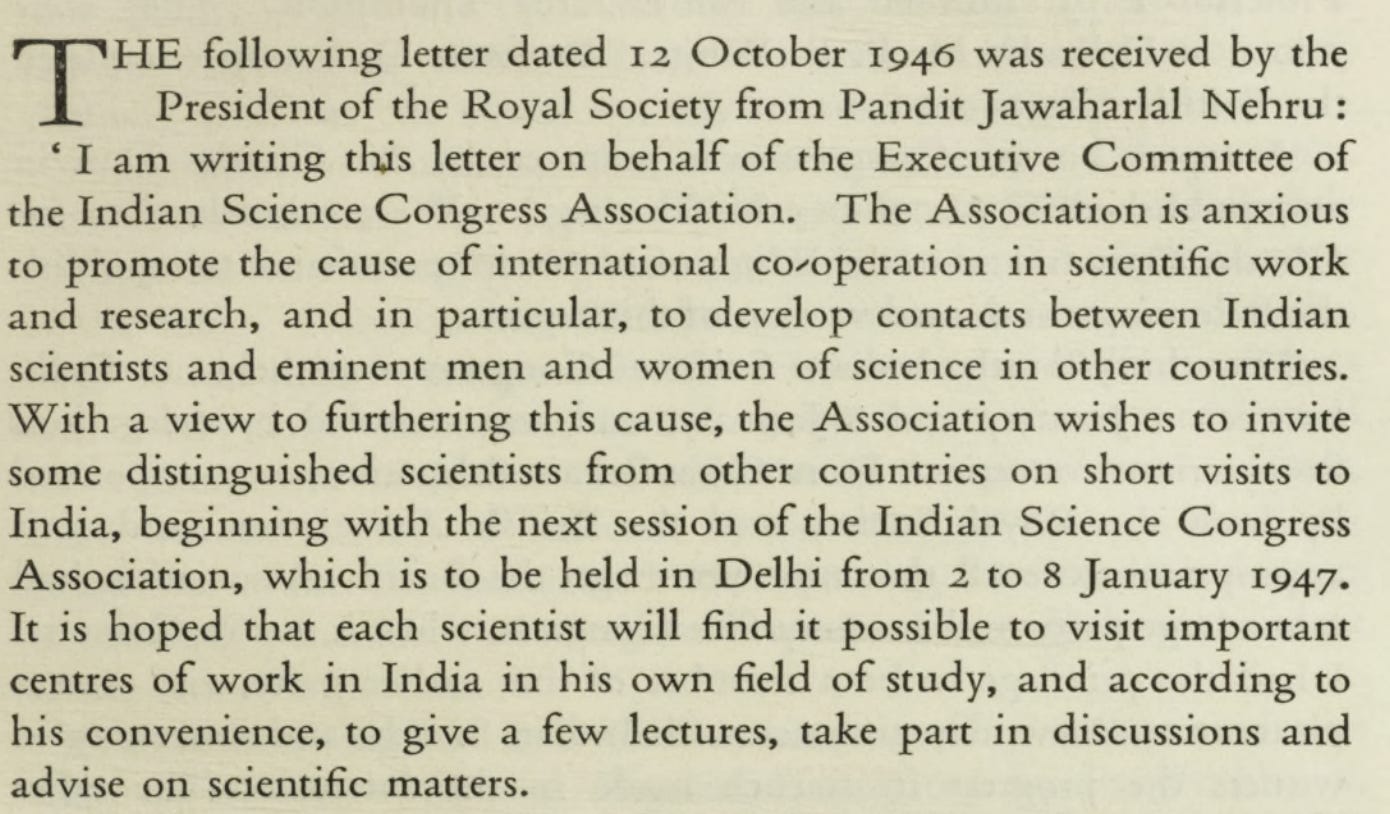As usual: press the ♡ button if you like the essay.
Every time I think of D’Arcy Thompson, I can’t help imagining the Thompson twins in Tintin’s adventures. D’Arcy wasn’t a bumbling idiot like the twins were, and as far as I can tell he didn’t wear bowler hats, but he’s been tarred with the same brush in my subconscious.
Anyway.
I had no idea that D’Arcy Thompson died soon after an extended trip to India in 1946-1947 to participate in the Indian Science Congress. What was he doing there? A letter from Nehru might have something to do with it:

which then goes on to say that:

Why was D’Arcy Thompson one of the invitees? He was a distinguished scientist for sure, but I can’t imagine that an 87 year old man would have traveled halfway across the world unless there was a strong personal reason.
What was that?
I first thought it must have been the doing of J.B.S Haldane who we know lived the last few years of his life in India. As it turns out, Thompson went to school with Haldane’s father and they were good friends. Haldane himself wrote a famous paper called “On Being the Right Size” which strikes me as being rather Thompsonesque.
But Haldane didn’t move to India until 1956, a full decade after Thompson came though I am guessing the younger man might have had a relationship with scientists in India and even Nehru by the forties.
The truth will need more digging, but this particular episode in intellectual history doesn’t interest me for the internal connections between British biologists. What interests me more is the thought that India might have been a ‘great hope’ for European scientists who were also committed to social progress. Most such people would have been Marxists or leftists more broadly, like Haldane. In 1945 Europe lay in ruins after a half century of scientifically aided destruction, so the idea that science led to social progress must have seemed dubious there. America is another story though: there science and technology led to prosperity and contributed to winning the second world war.
We forget the importance of “scientific development” to the early Indian state and Nehru’s particular obsession with that form of modernity. Of course, scientific development is mostly about technology rather than science per se; there’s a direct line from Nehru’s letter writing to the claim that “dams are the temples of modern India.”
It’s not just in science making and the creation of research institutions that we see Nehru’s ideology; there’s also the hiring of Le Corbusier as the architect of Chandigarh. Scientific development is very much about shaping of the land to suit human needs, of the Promethean idea that humans can remake nature in their image. Corbusier’s brutalist vision seems like an egregious example of human imperialism.
However, Corbusier wouldn’t have been possible without the Bauhaus movement and its vision of combining craftsmanship and modern materials. From the linked article:
Bauhaus wanted to find out how materials like concrete and steel and glass could be beautiful and could be shaped and designed in such a way as to serve the aesthetic needs of humankind.
There’s a little personal history here. Walter Gropius, the founder of the Bauhaus school, eventually emigrated to the US, teaching at Harvard and living in Lincoln. When I visited his home, I was surprised how compact it was, a cube of nested small spaces. Nothing like the McMansions we see today. Many of Gropius’ ideas took root in the belt around route 128, where early technology pioneers such as Hewlett and Packard set up shop before moving to Silicon Valley. The influence of Bauhausian ideas on “user centric design” in computing is unmistakeable.
Computing, for me, is the last empire of human exceptionalism, though I don’t want to make such a huge claim without substantiating it in future essays. In any case, the Promethean impulse seems mistaken today, when climate change is nature’s blowback for being shaped without permission.
While we can’t judge early twentieth century utopianism by today’s standards, we need to understand how the anthropocene peaked in the twentieth century through a connected set of ideas (of which Bauhaus and Scientific Development are both important examples) of human mastery over nature.



